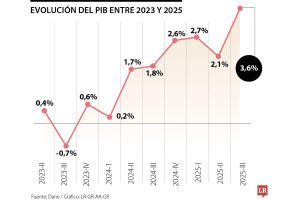Smart tax planning can help you save more for retirement and keep more of what you’ve already saved. Consider these tax-efficient retirement planning strategies.
Consider these strategies to help you potentially reduce your taxable income, generate tax-advantaged growth potential in your retirement accounts and keep more of what you’ve worked so hard to save.
Max Out Your IRA Contributions
The deadline to make a contribution to an Individual Retirement Account (IRA) for any given tax year is the due date of your federal income tax return of the following calendar year for most individual taxpayers. April 15, 2024 for tax year 2023. Note the two primary types of IRAs:
- Traditional IRAs, contributions to which may be tax deductible; or
- Roth IRAs, for potential tax-free distributions if certain conditions are met.1 Roth IRAs are funded with after-tax contributions.
For the 2023 tax year, the maximum contribution to a Traditional or Roth IRA is the lesser of (a) your taxable compensation for 2023, or (b) $6,500 (or $7,500 if you are age 50 or older at any time during the calendar year). These limits apply to all your Traditional and Roth IRAs combined.2
If you are self-employed or a small business owner, consider establishing an IRA-based retirement plan such as a Simplified Employee Pension Plan (SEP IRA), and fund that SEP IRA with employer contributions made under that plan. Note that if your business employs any employees, the SEP IRA will likely have to cover the employees as well if they qualify. For 2023, the maximum employer contribution to a SEP IRA (or to your own SEP IRA) is the lesser of (a) 25% of your employees’ eligible compensation (or, if you are self-employed, 20% of your net earnings from self-employment), or (b) $66,000 for 2023, and the deadline to contribute is the due date of the federal income tax return for your business, which typically has the same due date as your individual federal income tax return.3
Consider a Roth IRA Conversion
Some individuals can’t contribute directly to Roth IRAs if their income exceeds certain limits set by the tax code, but they may be able to convert a Traditional IRA to a Roth IRA. The taxable amount converted (including the tax-deductible contributions as well as tax-deferred earnings) is subject to ordinary federal income tax in the year the conversion is made, but any potential future appreciation on the converted amount may be federal income tax-free if certain requirements are satisfied.
Keep in mind, however, that such a conversion in 2023 may increase your 2023 adjusted gross income and your commensurate 2023 tax liability. If you are considering a Roth conversion, speak with your tax advisor about the appropriate time to execute this strategy. It may be prudent to execute a Roth conversion (utilizing an in-kind transfer of securities) when those securities have a relatively lower market value as opposed to a higher or appreciated market value, so that the conversion generates less ordinary federal income tax.
Required Minimum Distribution (RMD)
The SECURE 2.0 Act of 2022 (“SECURE 2.0”), which signed into law on December 29, 2022, increased the age at which required minimum distributions (“RMDs”) from retirement plans must commence from age 72 to age 73 in 2023 and to age 75 in 2033 (“RMD Age”). Specifically, the RMD Age is (a) age 70 ½ for individuals born before July 1, 1949, (b) age 72 for individuals born after June 30, 1949, but before 1951, (c) age 73 for individuals born after 1950, but before 1960, or (d) age 75 for all others – note, there is an apparent drafting error in the statutory language, which makes it unclear when age 75 starts to apply in lieu of age 73, but it appears age 75 is intended to apply if born after 1959. These new RMD requirements are effective for distributions made after December 31, 2022, for individuals who attain age 72 after that date. Speak with your tax advisor about how you should approach taking RMDs in the context of your overall retirement plan.
Give Your Distribution to Charity
The rules around Qualified Charitable Distributions (QCDs) generally allow individuals age 70½ or older to make a QCD of up to $100,000 per year directly from their IRAs (including Inherited IRAs) to an eligible charitable organization. Further, SECURE 2.0 recently expanded an individual’s ability to make a qualified charitable distribution from their IRA to a charitable organization by allowing a one-time distribution up to $50,000 (as indexed for inflation) to certain split interest entities, including charitable remainder annuity trusts, charitable remainder unitrusts and charitable gift annuities.4
QCDs can count toward satisfying RMDs for the year if certain rules are met. However, if an individual makes a tax-deductible contribution after age 70 ½, the amount the individual can exclude from their taxable income as a QCD will generally be reduced. Keep in mind that, for an IRA distribution to qualify as a QCD, it must satisfy certain requirements (e.g., must be paid directly from your IRA to an eligible charitable organization). Make sure to work with your tax advisor to ensure that you satisfy all the QCD requirements and that you have correctly reported QCDs have on your tax return.
Consider a Smart Gift With Your Distribution
You can choose to take a distribution to fund a 529 education savings plan for grandchildren or other family members. While your distribution will generally be subject to federal income tax, once you invest the funds in a 529 plan they can potentially grow tax-free. Any withdrawal used for qualified higher education expenses (as defined by the IRS) will generally be tax-free.5
Morgan Stanley now offers the Morgan Stanley National Advisory 529 Plan, the first 529 plan of its kind, available nationwide, exclusively to Morgan Stanley clients. You can select from goals-based asset allocation portfolios, guided by Morgan Stanley thought leaders, that align with your unique time frame, risk profile and goals, while gaining access to institutional caliber fund managers and pricing.
Subject to certain conditions, SECURE 2.0 permits penalty tax-free rollovers of certain assets held in 529 qualified tuition plans to a Roth IRA maintained for the benefit of a beneficiary of such 529 plan beginning in 2024. Such rollovers are subject to annual Roth IRA contribution limits and an overarching $35,000 lifetime limit. Further, the 529 plan must be established and maintained for at least fifteen (15) years and require the IRA owner have compensation equal or above the amount of the rollover.
Save More in a Variable Annuity
If you’ve contributed the maximum allowable to your 401(k) plans, IRAs and/or other tax-qualified retirement accounts, consider putting additional savings into variable annuities. Assets in a variable annuity maintain tax-deferred growth potential until the contract owner makes withdrawals. When you retire, depending on your annuity contract, you may be able to elect to receive regular income payments for a specified period or spread over your lifetime. Many annuities also offer a variety of living and death benefit options, usually for additional fees.
If you have complex tax planning needs, your Morgan Stanley Financial Advisor can connect you to experienced tax professionals at leading U.S.-based providers across the country to help ensure your tax strategy is optimized.







